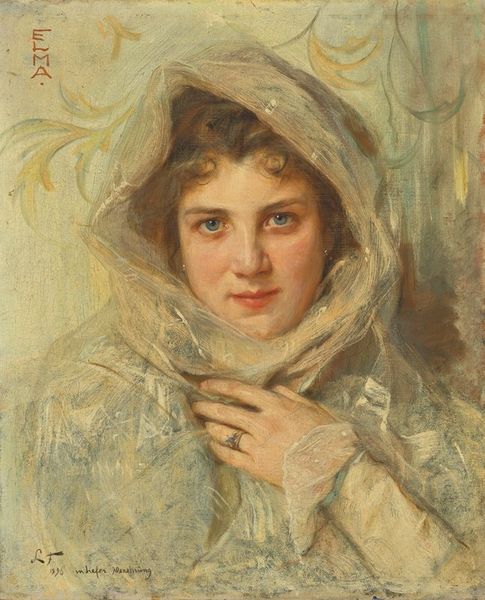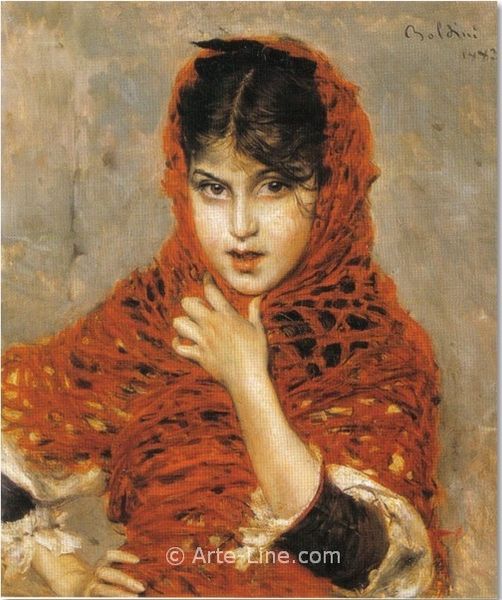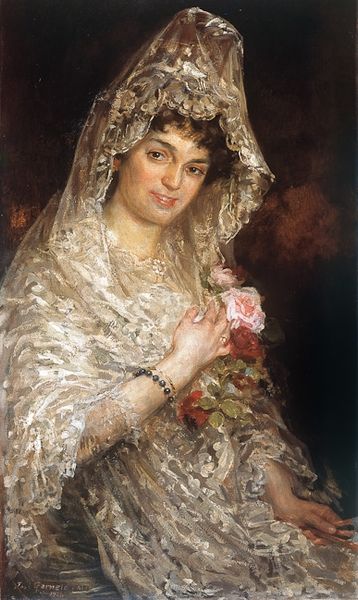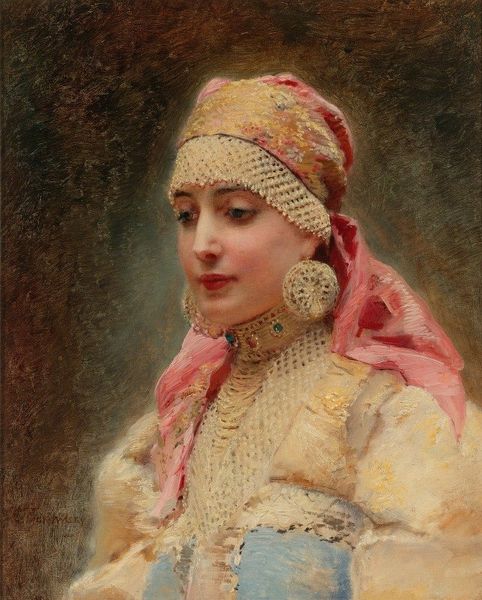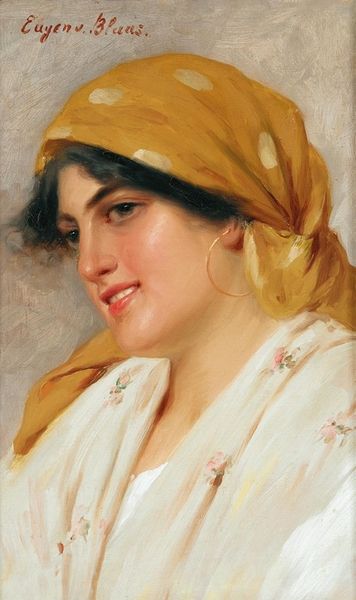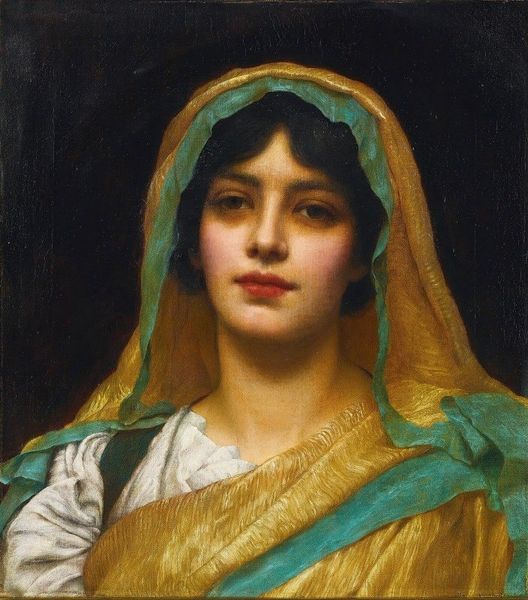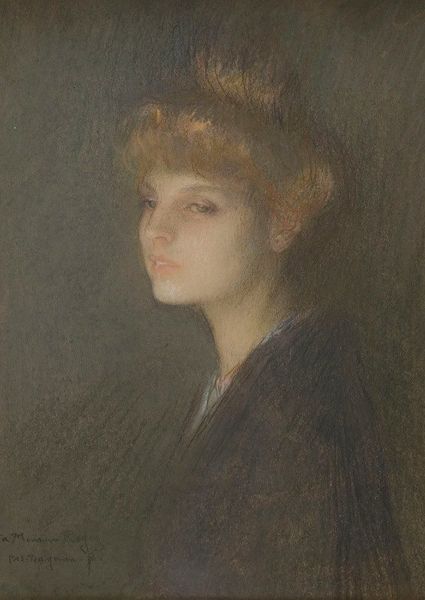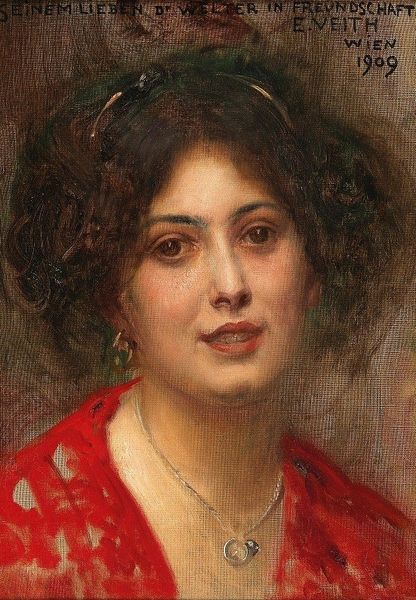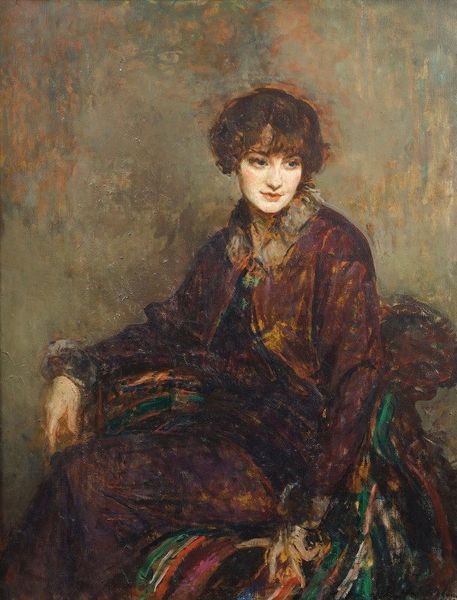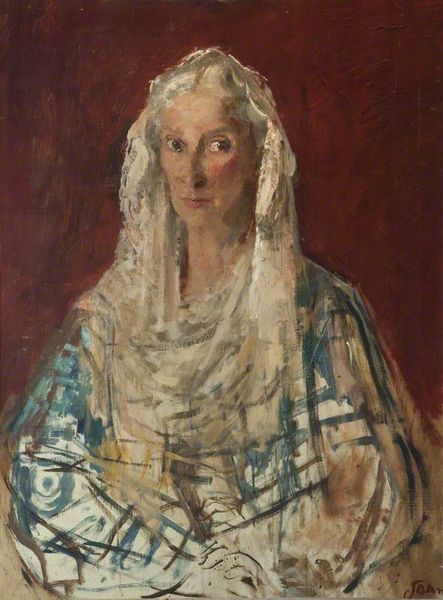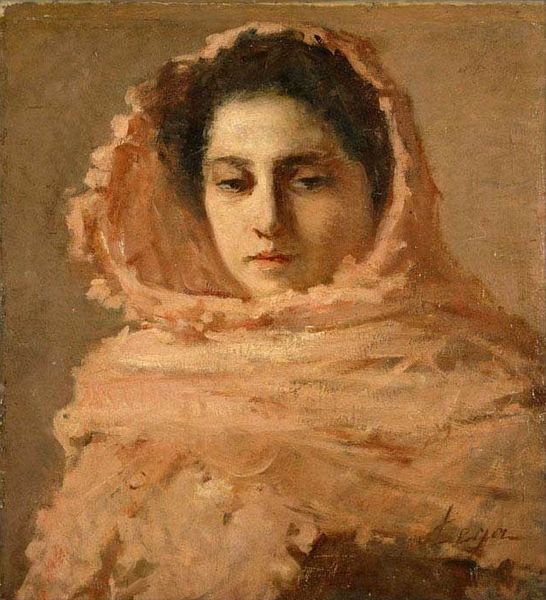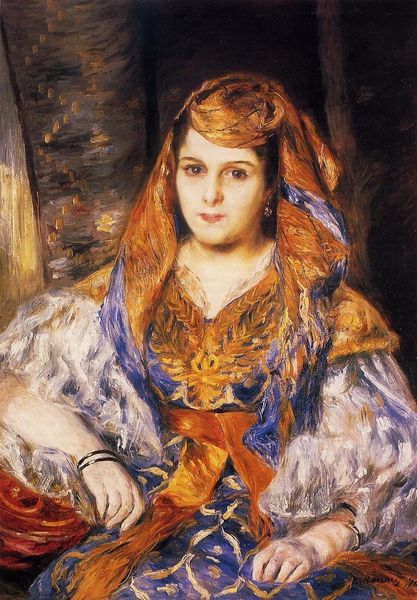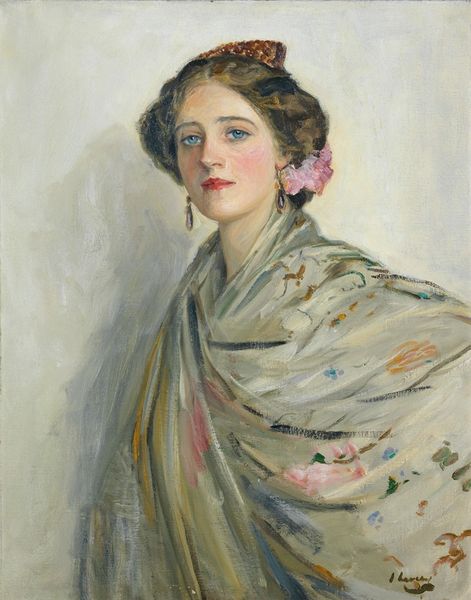
oil-paint
#
portrait
#
figurative
#
oil-paint
#
oil painting
#
genre-painting
#
portrait art
#
realism
Copyright: Public Domain: Artvee
Curator: Let’s turn our attention now to Girl in a Yellow Shawl, an oil painting by Eugen von Blaas. Editor: What strikes me immediately is the luminosity he’s achieved, particularly within the folds of that shawl. It's softly captivating. Curator: Indeed. Von Blaas was known for his attention to detail and his romantic depictions of Venetian life. This piece is no exception. Note the details in the embroidery visible beneath the primary yellow color of the shawl. Editor: Those subtle floral details add another layer of complexity, almost whispering beneath the dominant colour. How interesting that he doesn't push them forward. Also, look at how the textured background makes the figure stand out. It isn’t just the yellow, but the whole compositional effect. Curator: Considering his context, the labour and the sources required for creating such fabric is compelling, isn't it? We need to ask, how was the pigment sourced, manufactured, and distributed to allow for this production? And whose labour facilitated this piece? Editor: It does encourage that questioning of production but let's think about colour theory for a moment. Yellow can be jarring but there’s an understated and harmonious effect here. We can also appreciate the way he used shadow and light to give depth to the shawl. Curator: This is undeniably striking, however, let's acknowledge this may speak to a romanticised or even idealised image of the time, and it leaves us considering questions around access to the creation of the works as well. It can feel limiting to see beauty only through a limited lens. Editor: A fair point. Despite its limitations, there is merit to consider its surface qualities and how light and texture function in conjunction to shape its form and composition. Curator: A reminder that all art objects have much to teach us about material practices and society. Editor: And the lasting impact of formal harmony in interpreting our history.
Comments
No comments
Be the first to comment and join the conversation on the ultimate creative platform.
